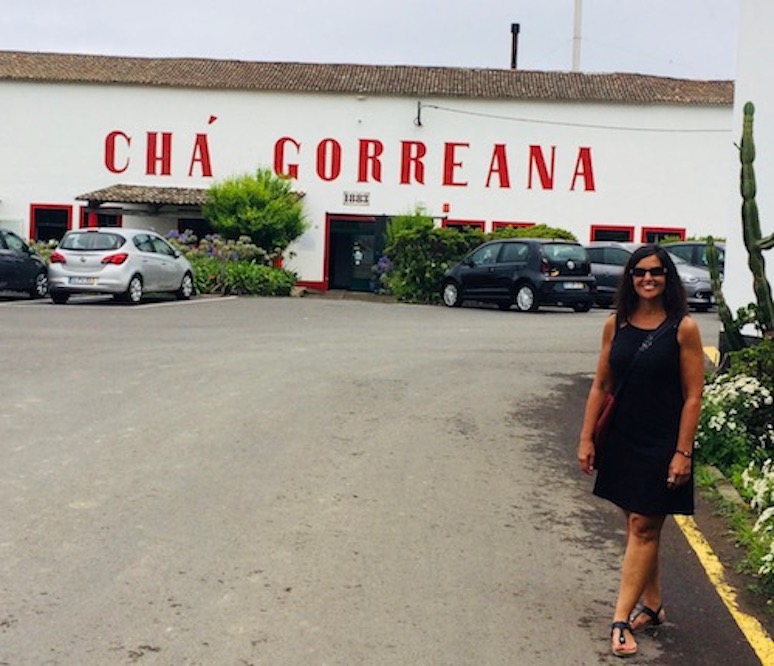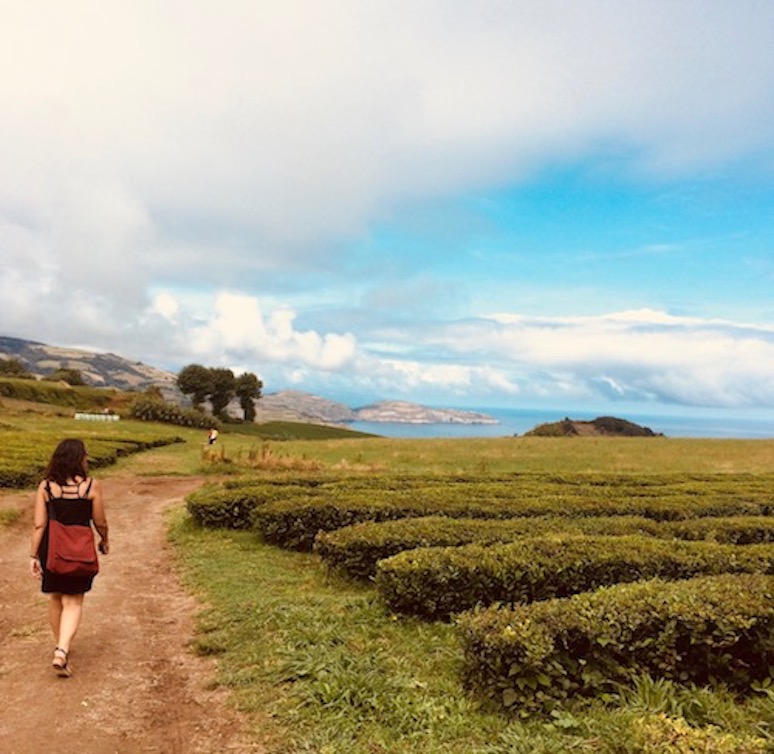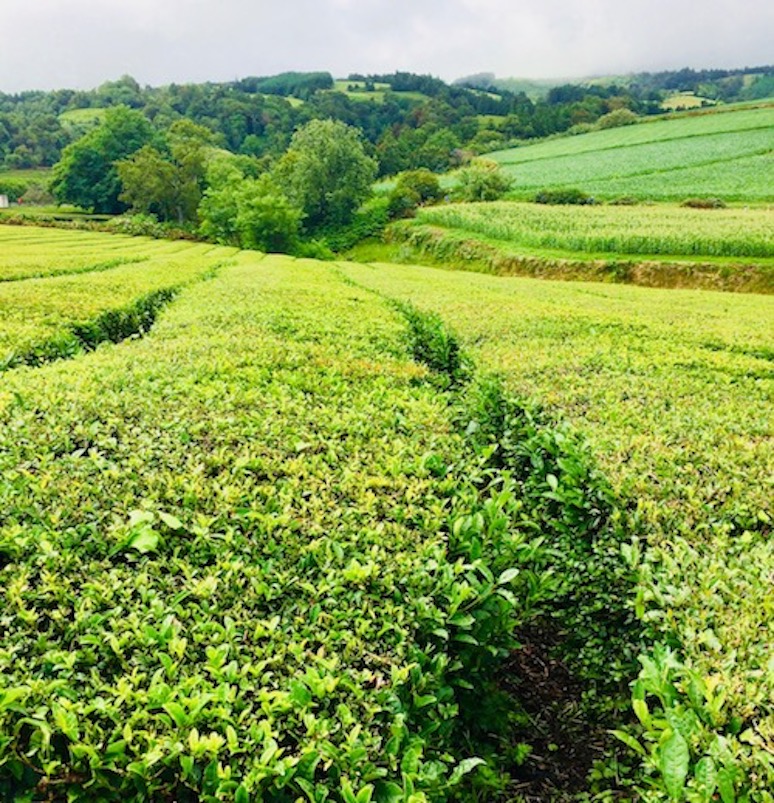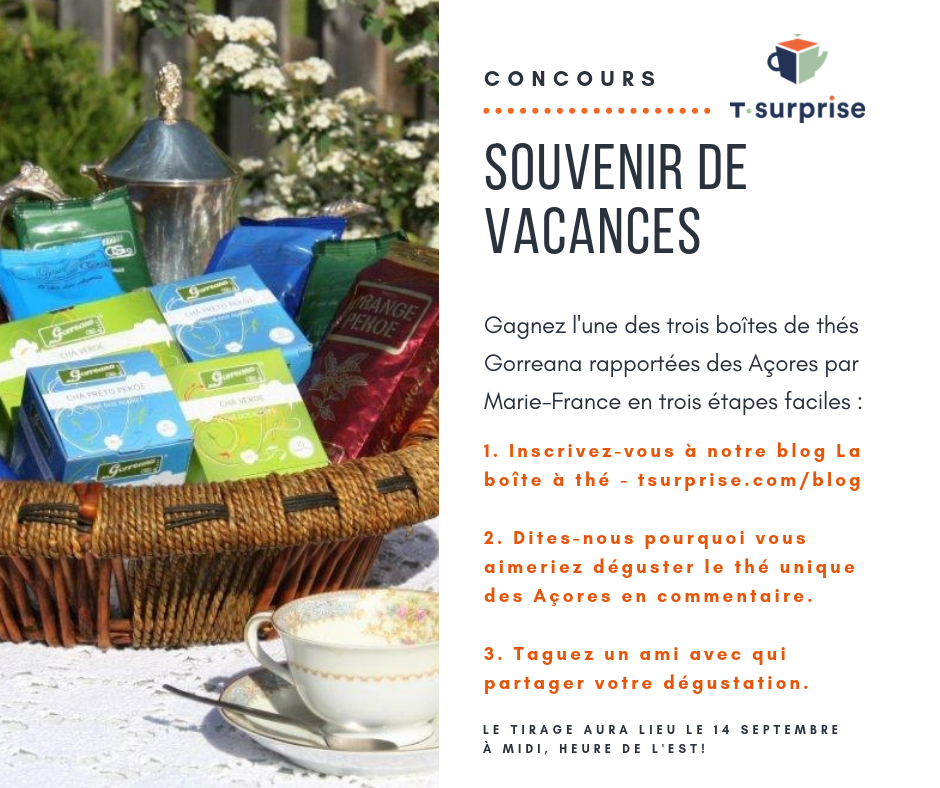2018/08/29 - Marie France

This summer, I took a vacation. I needed to get everything (except tea, of course!) To redo my energy reserves and explore unique landscapes. The archipelago of the Azores, located in the heart of the Atlantic Ocean, seemed to me the perfect place to change scenery and context. As I was right ...
Did you know that on the island of São Miguel, the greenest and largest of these Portuguese islands, are the only two tea plantations in Europe? To serve Europe, the Portuguese begin to import tea from China as early as the 16th century. In 1820, it is found that the island of São Miguel, with its hot and humid climate and its acid and clay soil, is ideal for the cultivation of Camellia Sinensis or the shrub of the tea tree. In the village of Maia, the adventure of tea culture, or Chá in Portuguese, takes flight while two Chinese from Macao, teach tea processing techniques to the owners of two plantations still in operation: Chá Porto Formoso and Chá Gorreana.

I had the pleasure of visiting the Chá Gorreana plantation with its 32 hectares of fields undulated by rows of tea plants on the mountainside. The site is beautiful. It overlooks the turquoise ocean and stretches out of sight with its lush green shrubs. The scent of the tea plant floats, light and in harmony with the sweetness of hydrangea hedges that line the road. In the distance, we hear the lowing of cows, the crash of waves hitting the volcanic stone reefs and the shearing of the workers who harvest the precious leaves. The first impression is in every way magical.

In the main building, I move freely. Here, we welcome you with a Bom Dia! (Hello!) Well felt and a friendly smile. The visit is free. I learn that the Chá Gorreana tea plantation has been run by the same family for 5 generations. It operates in a traditional way and environmentally friendly without treatment of pesticides, fungicides, herbicides or others. Year after year, it produces about 33 tons of teas for local consumption and export: green tea (Hysson) and black tea (Orange Pekeo and Broken Leaf Pekoe). The tasting allows me to enjoy a light and sweet tea. I can not resist and I buy some sachets of the tasty nectar that have been bagged by hand and in front of me by 4 workers who talk in Portuguese and joke with tourists.

I am conquered. Fortunately for me, I am learning that you can order these teas online and get delivery anywhere in the world (www.gorreana.org). A nice way to extend the holidays, right?
